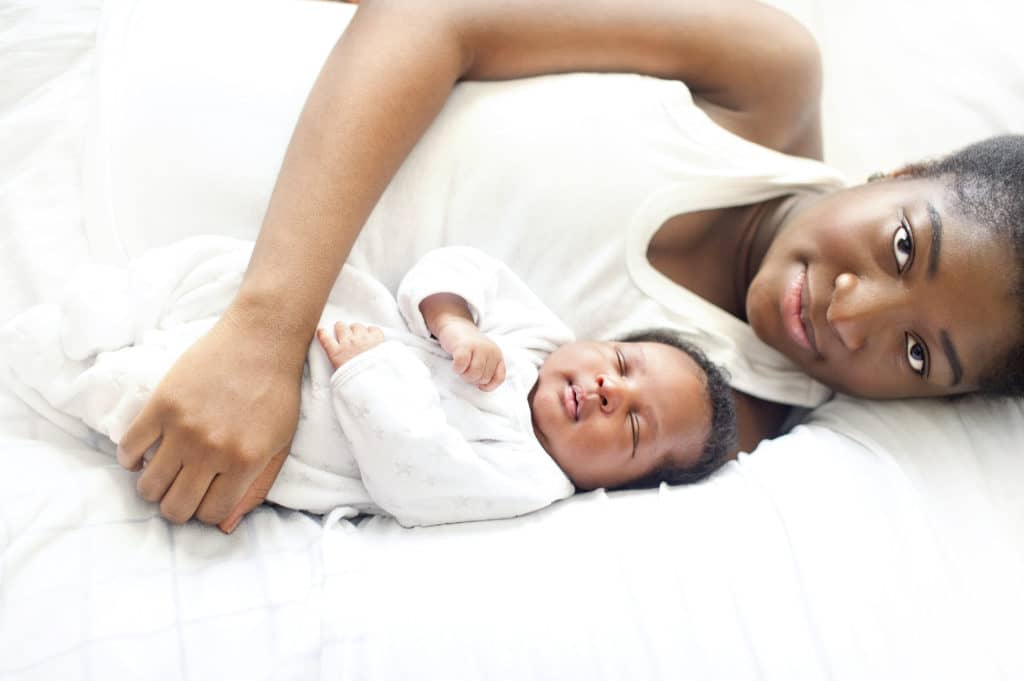Parenthood often comes with a lot of uncertainty and questions. For most parents, the ultimate goal is to protect their little ones as much as possible. Most times, a core area of concern lies with babies sleeping patterns and positions. Especially as it relates to what is safe and when a baby can start sleeping on his/her stomach.
If you’re in these shoes, this is the article for you!
First Things First
The first 12 months of your baby’s life is the most fragile period of his/her life. In addition to the numerous diseases and infections a baby may develop at this stage, there’s also the possibility of Sudden Infant Death Syndrome (SIDS). SIDS usually occurs when a baby is asleep, hence, the need to pay proper attention to your baby’s sleep position.

Thankfully, there is always a way to prevent these issues and protect your little one.
Although you may have gotten loads of advice from friends, family, and colleagues, it helps to remember that nothing beats accurate and reliable information from trained medical professionals.
That’s why you’ve got us.
In this article, you’d find out all you need to know about your baby’s sleeping positions; what is safe, when to place him/her on the stomach, and what to do when your little one rolls over. In addition, there’s a section on how to protect your baby from SIDS.
Don’t Stop Reading.
What’s The Safest Way To Put My Baby To Sleep?
In the first year of life, multiple sleeping positions are safe for your baby. To lighten the burden, the American Academy of Pediatrics (AAP) released a clear policy on safe sleep for babies. The recommendations provided in this policy help to reduce the risk of SIDS in infants.
These recommendations include:
- Use a flat and firm sleep surface
- Put your baby to sleep on the back at all times until after 12 months of age.
- Do not let your baby sleep in a shared bed. Although babies should sleep in their parent’s rooms, it should be on a separate surface designed for the little one.
- Keep soft objects and loose bedding away from the baby’s sleep area to reduce the risk of suffocation or SIDS.
- Consider offering your baby a pacifier at nap time and bedtime.
These recommendations are applicable to all sleep times including nap time and overnight sleep.
When Can My Baby Sleep on His/Her Stomach?
As we mentioned earlier, you should place your baby to sleep on his or her back in the first year of life. This way, you’re certain that your little one would get enough air to breathe properly while sleeping. Once your baby crosses the one-year line, you may allow them to sleep in any preferred position.

Here’s the fact: sleeping face down before the age of one increases a child’s chances of rebreathing already expelled air. Therefore, the simple answer to when your baby can sleep on his/her stomach is only when he/she is above one year old.
Furthermore, you may also have questions about what to do if your baby rolls over to his or her stomach while sleeping. Don’t worry, the next section answers this question in the best way possible.
What To Do When Your Child Rolls Over When Sleeping
Thankfully, it is really easy to control a baby’s sleeping position in the first 4 months after birth. This is because a newborn baby doesn’t have the motor skill to turn on his stomach at this point.
However, if your child turns to lie on his/her stomach while sleeping, by all means, let your baby keep sleeping. The fact is that babies who can change body positions during sleep are able to protect themselves from any dangers of sleeping in this position.
Therefore, your baby turning on the stomach during sleep is not a cause for alarm. In fact, this is quite common in babies older than 4 months who have developed sufficient motor skills. As a result, the risk of SIDS in these babies is quite small.
Nevertheless, you should always follow the recommendations highlighted above and aim to place your baby to sleep on his/her back throughout the first year.
When Is SIDS No Longer a Problem?
As we mentioned earlier, the possibility of SIDS is a major concern when a baby sleeps with his/her face down. Studies have shown that the high-risk period for SIDS is between the 1st-4th months after birth.
After the 4th month, your baby would have crossed the various stages of development which ensure that rolling over to the stomach is no longer risky.
Nonetheless, the safest option for every parent is to stick with placing the baby to sleep on his/her back for the first 12 months.
What Are The Benefits of Babies Sleeping on Their Stomach?
Many babies seem to prefer sleeping on their stomachs. The best explanation for this is that babies find this position more comfortable. As long as the high-risk period has passed, you may allow your baby to sleep on their stomach if they want. This can guarantee longer sleeping hours for your baby, and by extension, you.
The unanimous agreement between experts is that the safest way to put a baby under 12 months to sleep is face-up. Stomach sleeping is also safe as long as your baby gets themselves in the position after putting them to sleep face-up. Remember, a baby who is able to turn on the belly during sleep can remain in that position without the threat of harm.
In Conclusion
It really helps to remember that the face-up position is the safest for newborns and young adults. As long as you can control it, please make sure that your baby sleeps on his/her back at all times. Also, ensure that you follow other recommendations that will help your baby sleep safely.
With the information provided in this post, you are one step ahead in creating a safe sleep routine for your baby.
References
- American Academy of Family Physicians (2015). Sudden Infant Death Syndrome (SIDS). Accessed on 7th September, 2020 from https://www.google.com/url?sa=t&source=web&rct=j&url=https://www.aafp.org/afp/2015/0601/p778s1.pdf&ved=2ahUKEwiKpbKW7NbrAhXKTRUIHeiFALQQFjABegQIAxAB&usg=AOvVaw2otN7Q5MBWBfQL5CqcZM-m
- Bezerra Marina Alves de Lima, Carvalho Kaline Meneses, Bezerra Joana Lidyanne de Oliveira, Novaes Lívia Fernanda Guimarães, Monteiro de Moura Talita Helena, Leal Luciana Pedrosa (2015). Factors associated with the knowledge of mothers on sudden infant death syndrome. Accessed on 7th September, 2020 from https://www.google.com/url?sa=t&source=web&rct=j&url=https://www.scielo.br/pdf/ean/v19n2/en_1414-8145-ean-19-02-0303.pdf&ved=2ahUKEwiKpbKW7NbrAhXKTRUIHeiFALQQFjACegQIARAB&usg=AOvVaw1Y_cNrWwkuXi9JJNBw0Hdl
- Paul Goldwater (2004). “Sudden Infant Death Syndrome: A Critical Review of Approaches to Research.” Archives of Disease in Childhood. Accessed on 7th September, 2020 from https://www.researchgate.net/publication/8963251_Sudden_infant_death_syndrome_A_critical_review_of_approaches_to_research

